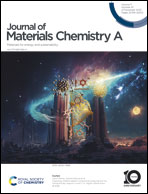pH-Sensitive adsorption of gastrointestinal drugs (famotidine and pantoprazole) as pharmaceutical pollutants by using the Au-doped@ZIF-90-glycerol adsorbent: insights from computational modeling
Abstract
Pharmaceutical pollutants, such as gastrointestinal drugs, pose a significant environmental concern due to their widespread use and potential adverse effects on ecosystems. Insights obtained from computational simulations yielded a more profound grasp of the adsorption mechanism. This study investigated the pH-sensitive adsorption characteristics of two commonly used gastrointestinal drugs, famotidine (FA) and pantoprazole (PA), as pharmaceutical pollutants. The adsorption process was studied using a computational modelling approach, focusing on the Au-doped@ZIF-90-glycerol adsorbent (A@Z/G) as a pivotal adsorbent. This adsorbent demonstrated remarkable adsorption capabilities for both FA and PA. The computational modelling revealed that the adsorption process is highly dependent on the pH of the environment. In protonated form, the adsorbent exhibited a significantly higher affinity towards the drugs, resulting in a more efficient removal of pharmaceutical pollutants. The interactions between the adsorbent and drugs were explored, revealing the crucial role of π–π stacking, electrostatic and van der Waals interactions, and hydrogen bonding. These interactions contributed to the strong adsorption affinity observed between the drugs and the A@Z/G adsorbent. Furthermore, the computational analysis uncovered the pH-sensitive nature of the adsorption process. At lower pH values, the protonation of the adsorbent enhanced its positive charge, leading to increased electrostatic attraction with the negatively charged drug surface. This pH-sensitive behaviour highlights the potential of the A@Z/G adsorbent for the targeted removal of pharmaceutical pollutants under specific pH conditions.



 Please wait while we load your content...
Please wait while we load your content...